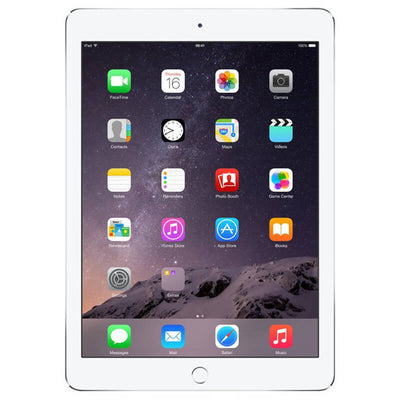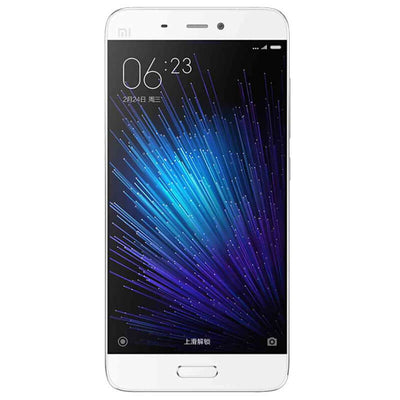Products
- Technology: GSM / CDMA / HSPA / EVDO / LTE
- Dimensions: 240 x 169.5 x 6.1 mm
- Weight: 437 g
- Display: LED-backlit IPS LCD 9.7 inches
- Resolution: 1536 x 2048
- OS: iOS 8.1
- Chipset: Apple A8X
- CPU: Triple-core 1.5 GHz Typhoon
- Internal: 16/32/64/128 GB, 2 GB RAM
- Camera: 8 MP, f/2.4 - 1.2 MP, f/2.2
Another millimeter thinner, the new iPad Air 2 has a body that's even more befitting the ethereal moniker the iPad bears second year in a row. Outside of that little fact however, the changes may not be as easy to spot. And that's hardly a surprise.
Apple's laser focus on making the ultimate tablet keeps the entire tablet industry moving forward. But in their camp, large strides are usually followed by baby steps and not all products end up as the breakthroughs we would have liked to see. One thing's for sure though, Apple certainly likes to keep us on the edge of our seats when it comes to what their next gen devices would look or feel like.
This year, the Air 2 is hardly hitting like an airstrike, but it still does a mighty fine job of keeping up the alpha male image. True, besides the slimmer profile the changes are hard to see. A nice exception is the screen, where the specs may sound the same on paper, but improvements are visible to the naked eye in terms of reflectivity and outdoor legibility.
The iPad Air 2 also has a better camera, an 8 megapixel auto focus unit, for what it's worth on a ten-incher, and as usual, Apple's latest and greatest chipset to make sure things are running faster than ever before.
So that about sums up the noteworthy things the iPad Air 2 brings to the table. But here's the cheat sheet of its key specs anyway and what we didn't quite like at first glance.
- Technology: GSM / CDMA / HSPA / EVDO / LTE
- Dimensions: 240 x 169.5 x 6.1 mm
- Weight: 437 g
- Display: LED-backlit IPS LCD 9.7 inches
- Resolution: 1536 x 2048
- OS: iOS 8.1
- Chipset: Apple A8X
- CPU: Triple-core 1.5 GHz Typhoon
- Internal: 16/32/64/128 GB, 2 GB RAM
- Camera: 8 MP, f/2.4 - 1.2 MP, f/2.2
Another millimeter thinner, the new iPad Air 2 has a body that's even more befitting the ethereal moniker the iPad bears second year in a row. Outside of that little fact however, the changes may not be as easy to spot. And that's hardly a surprise.
Apple's laser focus on making the ultimate tablet keeps the entire tablet industry moving forward. But in their camp, large strides are usually followed by baby steps and not all products end up as the breakthroughs we would have liked to see. One thing's for sure though, Apple certainly likes to keep us on the edge of our seats when it comes to what their next gen devices would look or feel like.
This year, the Air 2 is hardly hitting like an airstrike, but it still does a mighty fine job of keeping up the alpha male image. True, besides the slimmer profile the changes are hard to see. A nice exception is the screen, where the specs may sound the same on paper, but improvements are visible to the naked eye in terms of reflectivity and outdoor legibility.
The iPad Air 2 also has a better camera, an 8 megapixel auto focus unit, for what it's worth on a ten-incher, and as usual, Apple's latest and greatest chipset to make sure things are running faster than ever before.
So that about sums up the noteworthy things the iPad Air 2 brings to the table. But here's the cheat sheet of its key specs anyway and what we didn't quite like at first glance.
- Technology: No cellular connectivity
- Dimensions: 42.6 x 36.5 x 11.4 mm
- Weight: 45.6 g
- Display: AMOLED 1.6 inches
- Resolution: 390 x 312
- OS: watchOS 3.0
- Chipset: Apple S2
- CPU: Dual-core
- Internal: No
- Camera: No
- Technology: No cellular connectivity
- Dimensions: 42.6 x 36.5 x 11.4 mm
- Weight: 45.6 g
- Display: AMOLED 1.6 inches
- Resolution: 390 x 312
- OS: watchOS 3.0
- Chipset: Apple S2
- CPU: Dual-core
- Internal: No
- Camera: No
- Technology: No cellular connectivity
- Dimensions: 46 x 46 x 11.4 mm
- Weight: IPS LCD g
- Display: AMOLED 1.56 inches
- Resolution: 360 x 330
- OS: Android Wear OS
- Chipset: Snapdragon 400
- CPU: Quad-core 1.2 GHz Cortex-A7
- Internal: 4 GB, 512 MB RAM
- Camera: No
A year after the first generation took the smartwatch world by storm with its timeless looks, it is time for the new Moto 360 to step up to the plate. The new iteration of Motorola's acclaimed Android Wear device arrives on the market with revamped design, highly customizable body in two sizes, a version designed for ladies, and a brand new Sport model.
Of course, in addition to new looks and levels of customizability, the new Moto 360 also features improved hardware over the first generation. The newcomer packs a more powerful Qualcomm Snapdragon 400 solution, sharper display, and bigger battery. Take a look at its key features below.
- Technology: No cellular connectivity
- Dimensions: 46 x 46 x 11.4 mm
- Weight: IPS LCD g
- Display: AMOLED 1.56 inches
- Resolution: 360 x 330
- OS: Android Wear OS
- Chipset: Snapdragon 400
- CPU: Quad-core 1.2 GHz Cortex-A7
- Internal: 4 GB, 512 MB RAM
- Camera: No
A year after the first generation took the smartwatch world by storm with its timeless looks, it is time for the new Moto 360 to step up to the plate. The new iteration of Motorola's acclaimed Android Wear device arrives on the market with revamped design, highly customizable body in two sizes, a version designed for ladies, and a brand new Sport model.
Of course, in addition to new looks and levels of customizability, the new Moto 360 also features improved hardware over the first generation. The newcomer packs a more powerful Qualcomm Snapdragon 400 solution, sharper display, and bigger battery. Take a look at its key features below.
- Technology: No cellular connectivity
- Dimensions: 49 x 46 x 12.9 mm
- Weight: 63 g
- Display: Super AMOLED 1.3 inches
- OS: Tizen
- Chipset: Exynos 7270
- CPU: Dual-core 1.0 GHz
- Chipset: Exynos 7270
- Internal: 4 GB, 768 MB RAM
- COMMS: Wi-Fi 802.11 b/g/n
The wearable market has been expanding rapidly these last couple of years and things are only looking up. This is not the first time tech has tried to slip onto user's wrists, but this time around it seems both the business and consumer sides are finally ready. Wearables, and smartwatches, in particular, are really starting to mature.
However, there is also another take on this development. One that rings equally true. After a massive boom of new offers and ideas, it appears many major players are now dialing back their efforts and investments in this segment. Some OEMs, like Huawei, have even stated clearly that their current mindset is to wait things out and see where the market goes next.
Of course, there will always be the occasional release, like the Asus ZenWatch 3, but it is a fact that most Google team players, with a history in the wearable niche, like Motorola or LG, appear to be keeping a low profile lately. But thankfully, outside the arguably confining realm of Android Wear, innovation is still booming.
Enter Samsung. Just like Apple, the Korean giant has chosen a more or less proprietary development path for its wearable offers and is working hard to reap the potential benefits of being the different one, the alternative, if you will. There are few other manufacturers with such a rich portfolio of past products in the smartwatch realm, so it is hardly surprising that the Gear S3 stands out amid a growing crowd of wearables and has already amassed a lot of attention.The Samsung Gear S3 is available in two distinct editions - the Gear S3 Frontier (the one we have the pleasure of reviewing) and the S3 classic. The Frontier is the sportier of the two with its rugged, outdoorsy type of design, while the S3 classic comes with a leather band and is perhaps more suitable for a business setting. Only the Frontier model, however, has a version with an LTE data connectivity for now. We'd say that both are stylish enough for a formal occasion and would do just as good as a sports accessory. Their looks aside, the S3 Frontier and the S3 classic are identical when it comes to the hardware ticking under the hood.
- Technology: No cellular connectivity
- Dimensions: 49 x 46 x 12.9 mm
- Weight: 63 g
- Display: Super AMOLED 1.3 inches
- OS: Tizen
- Chipset: Exynos 7270
- CPU: Dual-core 1.0 GHz
- Chipset: Exynos 7270
- Internal: 4 GB, 768 MB RAM
- COMMS: Wi-Fi 802.11 b/g/n
The wearable market has been expanding rapidly these last couple of years and things are only looking up. This is not the first time tech has tried to slip onto user's wrists, but this time around it seems both the business and consumer sides are finally ready. Wearables, and smartwatches, in particular, are really starting to mature.
However, there is also another take on this development. One that rings equally true. After a massive boom of new offers and ideas, it appears many major players are now dialing back their efforts and investments in this segment. Some OEMs, like Huawei, have even stated clearly that their current mindset is to wait things out and see where the market goes next.
Of course, there will always be the occasional release, like the Asus ZenWatch 3, but it is a fact that most Google team players, with a history in the wearable niche, like Motorola or LG, appear to be keeping a low profile lately. But thankfully, outside the arguably confining realm of Android Wear, innovation is still booming.
Enter Samsung. Just like Apple, the Korean giant has chosen a more or less proprietary development path for its wearable offers and is working hard to reap the potential benefits of being the different one, the alternative, if you will. There are few other manufacturers with such a rich portfolio of past products in the smartwatch realm, so it is hardly surprising that the Gear S3 stands out amid a growing crowd of wearables and has already amassed a lot of attention.The Samsung Gear S3 is available in two distinct editions - the Gear S3 Frontier (the one we have the pleasure of reviewing) and the S3 classic. The Frontier is the sportier of the two with its rugged, outdoorsy type of design, while the S3 classic comes with a leather band and is perhaps more suitable for a business setting. Only the Frontier model, however, has a version with an LTE data connectivity for now. We'd say that both are stylish enough for a formal occasion and would do just as good as a sports accessory. Their looks aside, the S3 Frontier and the S3 classic are identical when it comes to the hardware ticking under the hood.
- Technology: GSM / HSPA / LTE
- Dimensions: 144.6 x 69.2 x 7.3 mm
- Weight: 129 g
- Display: IPS LCD 5.15 inches
- Resolution: 1080 x 1920
- OS: Android OS, v6.0 (Marshmallow)
- Chipset: Snapdragon 820
- CPU: Quad-core
- Internal: 32GB/64GB/128GB
- Camera: 16 MP, f/2.0 - 4 MP, f/2.0
It's been a while since we met the last of the Mi kind. Even though the Xiaomi Mi 4 went on sale back in the summer of 2014, it succeeded in staying relevant for over 20 months and surpassed the lifespan of many competitors. Xiaomi surely took the time to make the Mi 5 worthy of the flagship series name.
The Mi 5 was the first Xiaomi phone to be unveiled under the massive spotlight of the world's biggest mobile expo - the MWC in Barcelona. And with its stunning looks and capable performance, the Mi 5 deserved nothing less.
The Xiaomi Mi 5 is instantly likeable - the new flagship comes with unbelievably thin bezels, a sharp profile, a curved back and a lightweight body - all adding to one of the most impressive exteriors a modern smartphones can hope for.
Then you learn that inside there is the latest Snapdragon 820 chipset, a new 16MP camera with 4-axis optical stabilization and yet no camera hump, generous storage options, rich connectivity options, and a beefy battery. How about that?
- Technology: GSM / HSPA / LTE
- Dimensions: 144.6 x 69.2 x 7.3 mm
- Weight: 129 g
- Display: IPS LCD 5.15 inches
- Resolution: 1080 x 1920
- OS: Android OS, v6.0 (Marshmallow)
- Chipset: Snapdragon 820
- CPU: Quad-core
- Internal: 32GB/64GB/128GB
- Camera: 16 MP, f/2.0 - 4 MP, f/2.0
It's been a while since we met the last of the Mi kind. Even though the Xiaomi Mi 4 went on sale back in the summer of 2014, it succeeded in staying relevant for over 20 months and surpassed the lifespan of many competitors. Xiaomi surely took the time to make the Mi 5 worthy of the flagship series name.
The Mi 5 was the first Xiaomi phone to be unveiled under the massive spotlight of the world's biggest mobile expo - the MWC in Barcelona. And with its stunning looks and capable performance, the Mi 5 deserved nothing less.
The Xiaomi Mi 5 is instantly likeable - the new flagship comes with unbelievably thin bezels, a sharp profile, a curved back and a lightweight body - all adding to one of the most impressive exteriors a modern smartphones can hope for.
Then you learn that inside there is the latest Snapdragon 820 chipset, a new 16MP camera with 4-axis optical stabilization and yet no camera hump, generous storage options, rich connectivity options, and a beefy battery. How about that?














